Why Should I Get A Macerating Toilet?
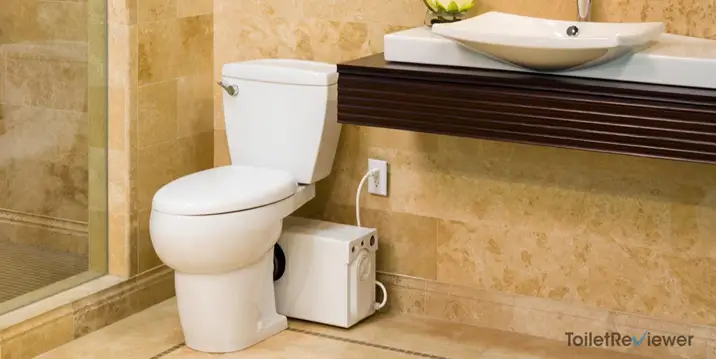
Owing to their unique construction, the best Macerating toilet systems have a number of benefits to offer. These toilets are capable of pumping waste up an incline, which is great when you’re installing a toilet in a basement.
Alternatively, you would have to install a new plumbing system, which is a costly and time-consuming undertaking.
Provided that you use them in the right manner, Macerating toilets have a relatively long lifespan. Some of the best Macerating toilets are known to last for 10 to 15 years when maintained properly. With this type of toilet, you will be required to replace parts less often.
Because macerating toilets can be installed below the sewer line, they make it possible to install a bathroom where it would otherwise be impossible. Macerating toilets make it possible to install bathrooms in basements, attics and other places where a regular toilet might not be an option.
If you’re a moderately competent DIYer, you should be able to install a macerating toilet yourself. There’s no need to break up the bathroom floor, or to go to the trouble and expense of hiring a professional plumber.
All you really need to put in a macerating toilet is a water supply, a power supply, and a small diameter waste pipe.
It’s far quicker to install these than it is to run a large drain pipe for a conventional toilet. You could put in a functioning bathroom in a single day if you use a macerating toilet.
Because they’re so easy to set up, a macerating toilet can be moved quite easily. If the needs of your family change, you can move the toilet to a different room far easier than you could with a regular toilet. In fact, due to their portability, macerating toilets are often used on ships and RVs.
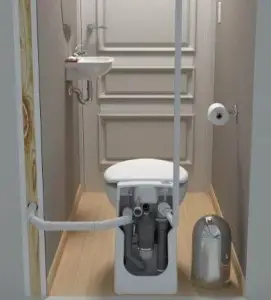 A cheap Macerating toilet may save you some money but take longer to pump the tank. The pump on these units needs to be maintained regularly, especially the impellers.
A cheap Macerating toilet may save you some money but take longer to pump the tank. The pump on these units needs to be maintained regularly, especially the impellers.
If not maintained regularly, the pump will become slower gradually, which may impact on the overall performance of the toilet.
As compared to standard toilets, macerating toilets require more water to process waste and empty the tank.
This will make an impact on water efficiency in your home. You should also monitor the pump with every use to ensure that it does not run dry. Running the pump dry may damage it, void its warranty, or blow a fuse.
Installing a bathroom in your basement is a rather complicated project. With such an installation, you either have to install a new plumbing system to accommodate a standard toilet or install the best Macerating toilet models.
The latter option will save you money on installation costs and give you unmatched performance. However, due diligence has to be taken while using basement toilets to ensure they last longer.
The discharge system in an up flush toilet is different from the one used in a conventional toilet. Having been designed to dispose of human wastes upwards, macerating bathroom systems are associated with a number of problems and limitations.
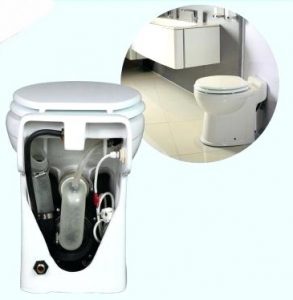 Using cleaning products outside of the manufacturer-approved list may expose your up flush toilet to corrosive chemicals.
Using cleaning products outside of the manufacturer-approved list may expose your up flush toilet to corrosive chemicals.
This may end up damaging the upflush toilet’s macerator unit. Certain bowl cleaners, especially the ones containing hydrochloric acid, may eat away at the unit’s rubber parts.
Upflush toilets cannot discard certain items that traditional toilets can. Tough materials like female sanitary items or even condoms may cause the toilet to clog.
Up flush toilets are not suited for just any toilet installation project. Local plumbing codes may forbid you from installing an upflush. Have a look at your local plumbing and building codes before buying one. This way, you will learn whether one is allowed in your home.
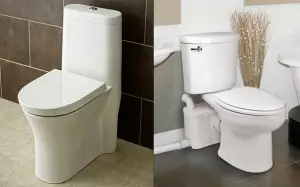 There are many times where a macerating toilet might need to be installed as opposed to a standard toilet.
There are many times where a macerating toilet might need to be installed as opposed to a standard toilet.
A standard toilet uses the force of gravity and siphoning to move waste into the drainage system. If the drainage line is above where you want to put the toilet or too far from your toilet location, a standard toilet might not be able to handle its job.
After all, it isn’t always easy to move solid waste through pipes. Traditional toilets don’t actually break down solid waste.
When flushed, a macerating toilet will send solid waste through a grinder which will break down and liquefy the waste. Since macerating toilets liquefy solid waste, they are easily installed in places where a traditional toilet simply won’t work.
Traditional toilets are usually just as loud as macerating toilets, despite the fact that macerating employs a grinder. It’s important to keep in mind that unless your circumstances force you to use a macerating toilet, a traditional toilet is usually a better option.
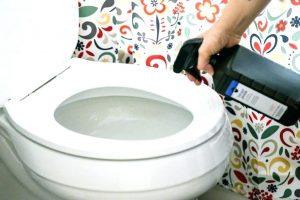 Macerating toilets need to be maintained properly for enhanced durability and performance.
Macerating toilets need to be maintained properly for enhanced durability and performance.
With proper maintenance, you can also avoid some of the common toilet issues, such as leaks and clogs.
Just as is the case with conventional toilets, up flush toilets need to be cleaned from time to time.
However, some cleaning chemicals are known to have a damaging effect on the pump parts and components. To avoid this, you should only use the cleaning chemicals allowed by the manufacturer.
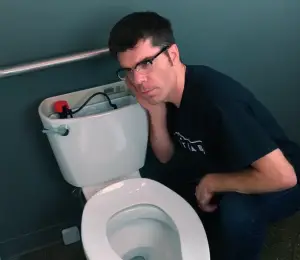 Look for wet areas on and around the toilet as well as on the water pipe that connects the toilet to the wall. If you notice any leaks, call a plumber to repair it as soon as possible. Leaks can cause spikes in your water bill or even cause serious damage to the walls and flooring.
Look for wet areas on and around the toilet as well as on the water pipe that connects the toilet to the wall. If you notice any leaks, call a plumber to repair it as soon as possible. Leaks can cause spikes in your water bill or even cause serious damage to the walls and flooring.
In addition to human waste, most Macerating basement toilets can only flush toilet paper. Disposing anything else into the toilet may cause it to block or even damage the pump. Avoid putting things like feminine sanitary products, paper towels, and cleaning wipes down the toilet.
Macerating toilets use a spinning blade to chop up, or macerate, anything that goes down them. They then pump this water upwards to reach the sewer line.
No. Like a regular toilet, a macerating toilet needs to be supplied with water. Most also need to be supplied with power, but some are battery operated.
No. While you do need a water supply and a waste pipe, these can be small diameter pipes that are easy to run through a house. A macerating toilet lets you turn almost any room into a bathroom.